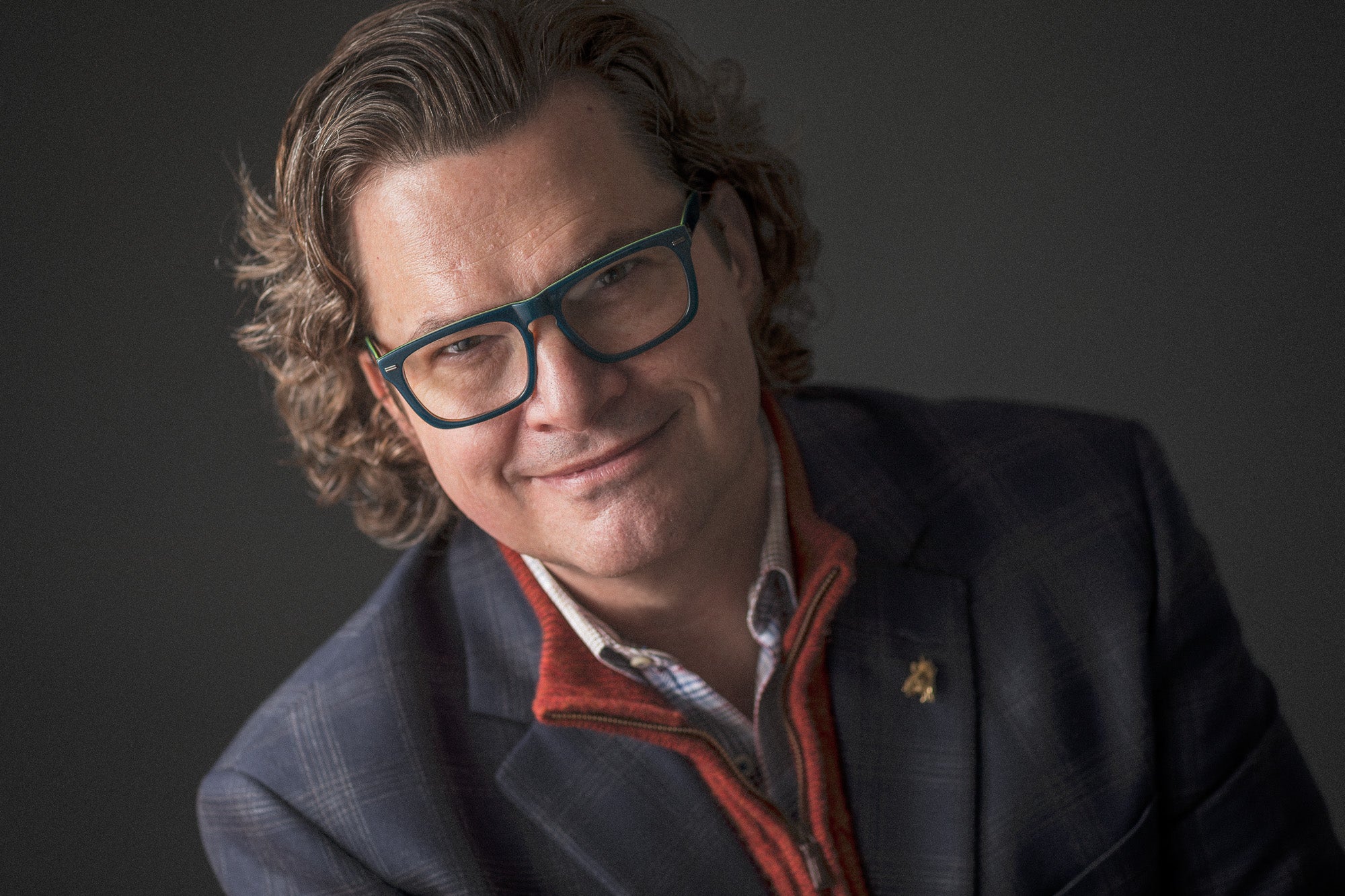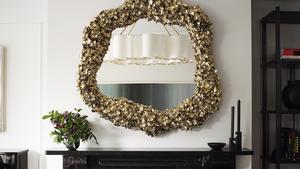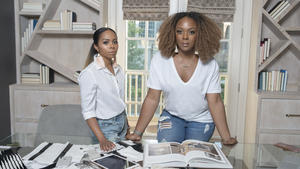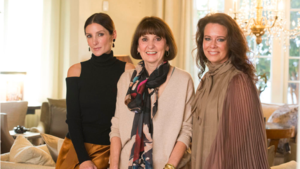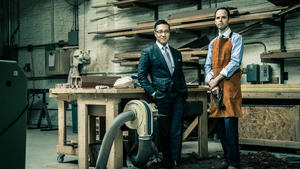The 50 States Project is a yearlong series of candid conversations with interior designers we admire, state by state. Though the series is a celebration of American designers, this particular conversation happened across the pond: Over lunch at Le Pré aux Clercs during Paris Déco Off, we caught up Chris Goddard, who founded his Fayetteville, Arkansas–based firm in 1992 after his first-ever project was published in Architectural Digest. He tells us why designers should never publish their own homes, how he sunk a client’s yacht (but was still tapped to furnish the next one), and why he’s never used the same piece twice.
Your design career started while you were still in college, with a client who wanted her bookcases done. How did you land that first job?
I grew up in the South, and I was studying business so that I could go into the family business, but I wasn’t passionate about it. I had a clothing addiction, but I got a very small allowance from my family, so I got a job at the nicest men’s clothing store in town to have money to buy more clothes (it was the ’80s, so of course you had to wear two shirts) and get a discount. Within a month or two [of working there], they were like, “Hey, we don’t have anybody to do the windows. Could you do that?”
I started doing all of the visual merchandising, and my windows drew so much attention that a lot of the women who were shopping for their husbands started asking about them. Some started asking, “Would you mind coming over to do my bookcases? Or rearrange the living room?” I was so ignorant—I was still in college—so I was like, “Oh, sure!” I didn’t know you were supposed to charge.
Wait, you would just go and do it for fun?
Yeah, I would do it after work and on the weekends—and it was awesome fun. Then I thought, If I’m going to do this, I need to teach myself how to paint and hang wallpaper. I also thought, When I own my own business, I want to know enough about the process to know if somebody’s telling me the truth or not. After that, I would go into these houses and paint and paper—I was doing entire rooms, handing over my receipts to get reimbursed, and every now and then someone would pay me $20, or maybe $100, as a tip. Sometimes I’d get a nice gift. I didn’t know. I was learning.
Then a very wealthy woman in town came to me and said, “My husband passed away. I’m going to leave you a blank checkbook to redo the house, and I’ll be back in a year.” And I thought, Well okay—let’s do this!
You were still in college at the time?
Yes. I was 20 years old. I had no idea that I was supposed to mark up—I didn’t even know the first thing about finding resources. But when you’re young, you have no fear. That’s the hardest part of getting old: We start to have fear, and it makes you crazy! At the time, I thought, I’m going to figure this out.
Is that the point that design became your full-time job?
No, I did it on the side—I was still finishing school and had my clothing hustle going, but I was working toward opening my own store and firm.
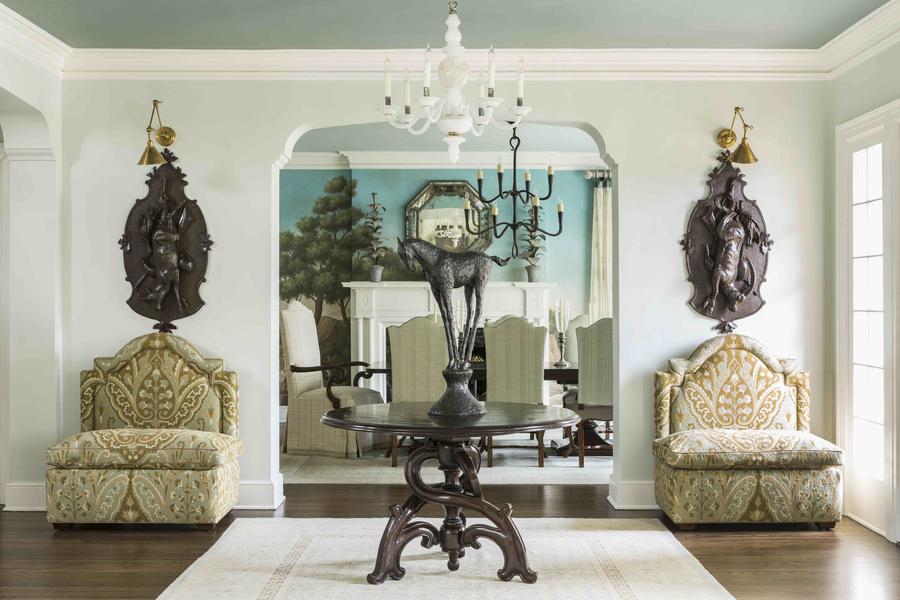
How did you know what to do?
In the 1980s, all we had were interior design magazines, so those were my bibles. I would go through them, rip out pages, find the sources and track them down. The closest designer resources were in Tulsa, Oklahoma, so I started going there. I would figure out who the best designers were in town, go into their stores or studios and be like, “Hey, I’m Chris. I’m from Arkansas.” They would look at me like, Who is this crazy 20-year-old asking all of these questions? I’d say, “I need wallpaper. Can I go through your books?” And most people were really nice. Designers used to be a lot more willing to share information; I’m still big on sharing resources today because other designers were so kind to me when I was starting out.
I became really good friends with prominent designers like Charles Faudree in Tulsa, who led the French Country movement back in the day. He took a liking to me and pointed me to the design center in Dallas. So one day, I got in the car and drove there. I had never been to a design center before, but I just started going into showrooms and seeing things I liked. When I introduced myself, they’d say, “Arkansas? We don’t have any accounts in Arkansas.” And I was like, “Maybe you need one.” Again, zero fear. This is the 1980s and I’m buying Donghia furniture. I had this innate sense of what I wanted, but I didn’t really understand what it was. I also had no idea about shipping. When people were like, “We don’t have trucks that go there,” I started renting a U-Haul and dealing with it myself.
Your firm is based in Fayetteville, Arkansas. Tell me what it was like there when you started working on this project.
The clothing shop I worked at was the nicest store in this little college town, [which was also] the home of Walmart, [transportation and logistics company] J.B. Hunt and Tyson Foods. This was right when all of those companies were taking off, but there wasn’t a lot of luxury or design available—we’re talking about chicken farmers, the trucking industry and retail chains that are not high-end. They all sort of exploded at the same time in the ’80s, but there wasn’t anybody doing high-end design. It wasn’t a major city—the population was around 30,000—but we have more billionaires per square mile than anywhere else in the United States, and with no resources.
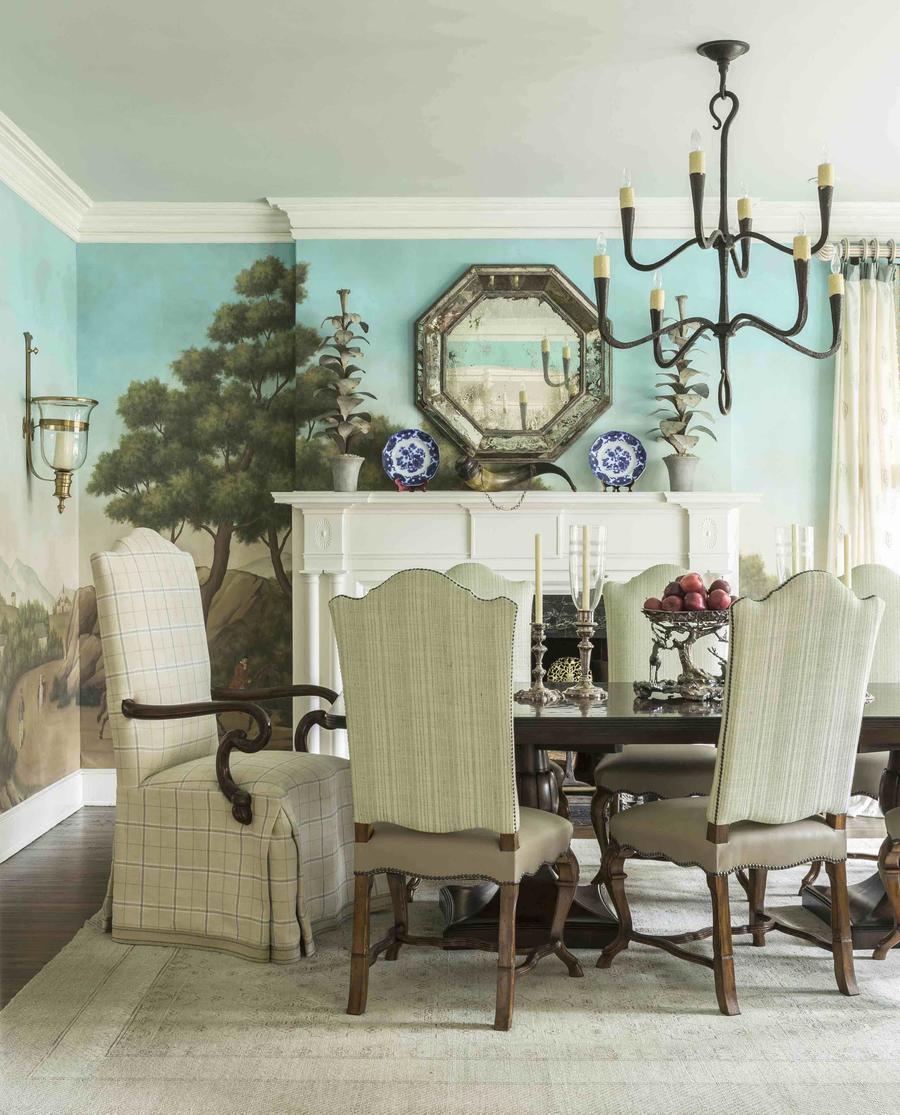
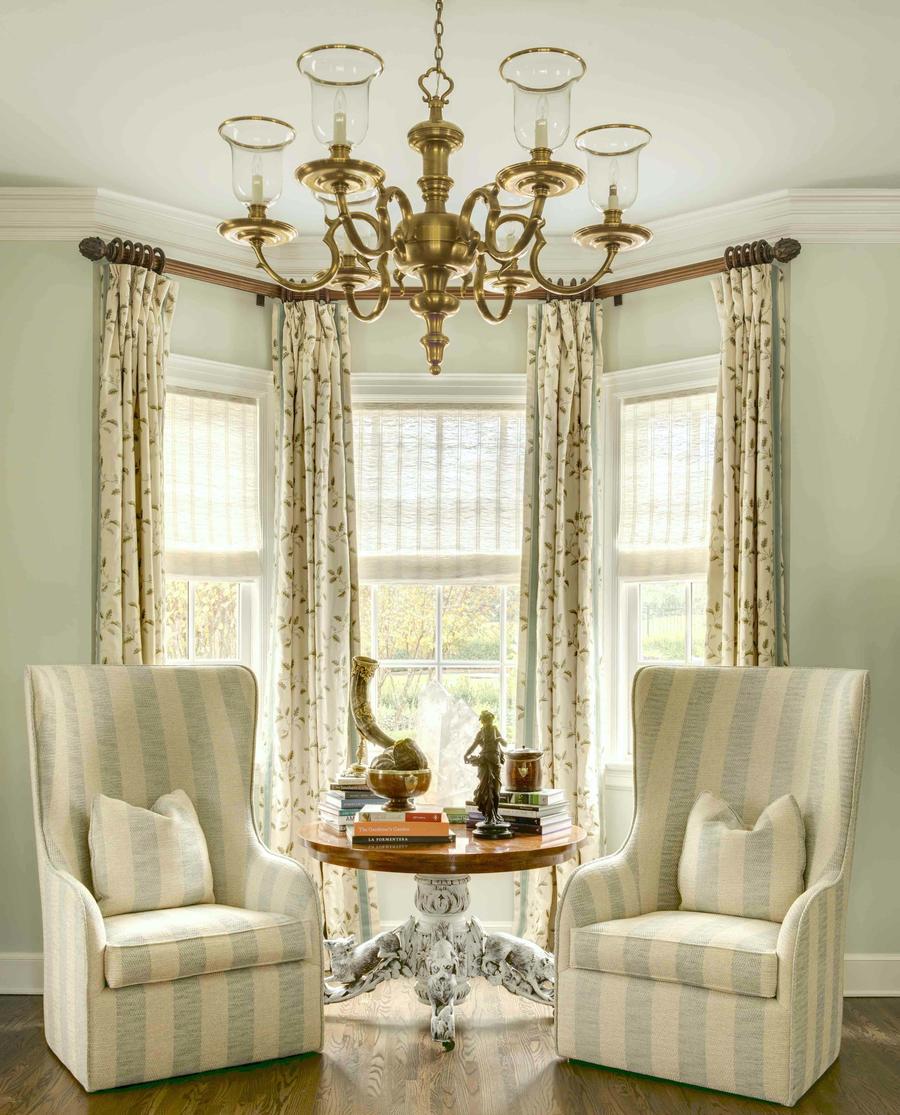
Is that still true? Or has the town caught up to that clientele?
It’s still true. We’re up to around 250,000 people, but the town itself hasn’t really caught up. They’re trying. We have Crystal Bridges Museum of American Art, which is major, but it’s mostly this little anomaly in the Ozark Mountains.
When did you start actually making money for the work?
I opened up my store, Beauregard, in 1992. There was nowhere to shop where I lived, so I decided to [create one]. It was about 18,000 square feet—again, no fear. I had gone to every market for high-end furniture, accessories and art, and in the back of the shop was a design studio. I went to showrooms for books from every major fabric line. Upstairs, I had a 9,000-square-foot workroom where I found the best seamstresses to make our draperies and do our upholstery. I also had an in-house florist. I thought that if I was going to do your house, your flowers needed to be pretty too. We did holiday decor—we were a total lifestyle concierge.
What was the initial reception?
It was featured in Southern Accents and Veranda when it opened because people had never seen a store like it before in a small town. The day it opened, people came in and were like, “You are never going to sell a $75 candle or fabric that’s $30 a yard. You’re in the Ozarks—nobody knows what Scalamandré is and nobody’s going to buy tiger velvet.”
How many people did you employ that early on?
Sixteen. Again, ignorance is bliss. I was like, “Hey, you want a job? Come work.” It was an army of people that were young and talented. There were lots of learning curves—dealing with people, and also dealing with luxury clientele that had never been exposed to this level of service, detail, quality or price point. I spent most of my time explaining the difference between a fabric that is $10 a yard and $80 a yard, the difference between a foam cushion and a down cushion, or why something that is hand-carved costs more than something that is not.
As I was educating them, I was also educating myself. And the more educated your consumer becomes, the more they expect and appreciate it, so I was constantly trying to learn so that I could teach my customers more. And the nicer their homes were, the better they felt and the better they lived—because your environment elevates your mood, you know? If you’re in a beautiful place, you feel beautiful.
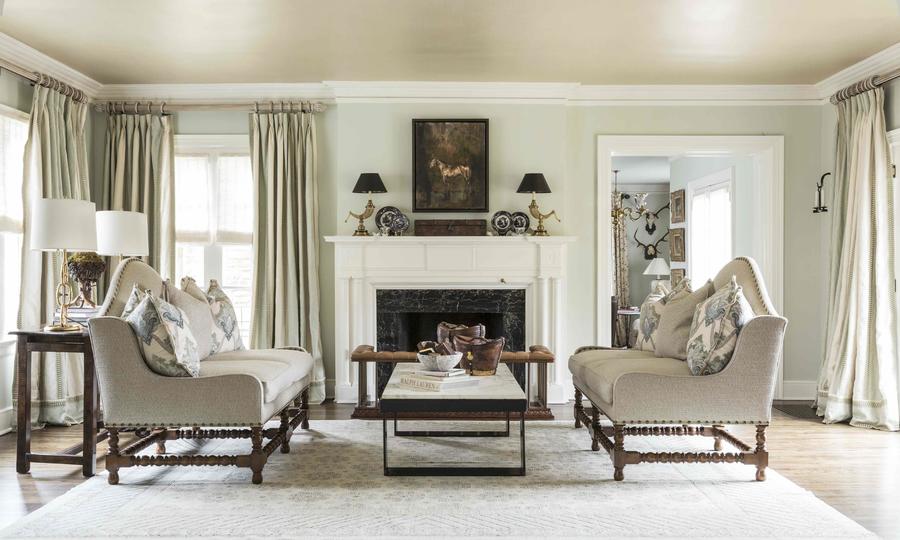
Back to that first project—how did it turn out?
That first year was a little dicey, but it was actually photographed for Architectural Digest.
Your very first project?
Yes. I thought, This turned out pretty cool. I ought to contact a magazine. Architectural Digest was my favorite one, so I sent slides in. They called me back to say they’d love to feature it, then came and photographed it, which led to multiple projects for the same family. I was 21 years old, but I ended up doing all of their homes, their corporate headquarters, their boats and planes.
How many projects are you typically working on?
We do between 20 and 60 projects a year. We’ve never really had a time that we haven’t been busy.
Is it all residential work?
We do about 40 percent commercial, 60 percent residential. And some of those are large commercial projects—which required learning commercial design. I had to understand the ratings and codes. I also work with Crystal Bridges and design a lot of their installations. I just did a huge one for them a year ago—we built a 1950s room so that you could actually live with the art. We wanted people to know that art doesn’t just have to be in a museum.
When did you start taking commercial projects?
It was pretty immediate. The worst thing you can say is no, right? So I would always say yes and figure it out. Why not try? The worst thing that you can do is fail, and I’ve failed a lot.

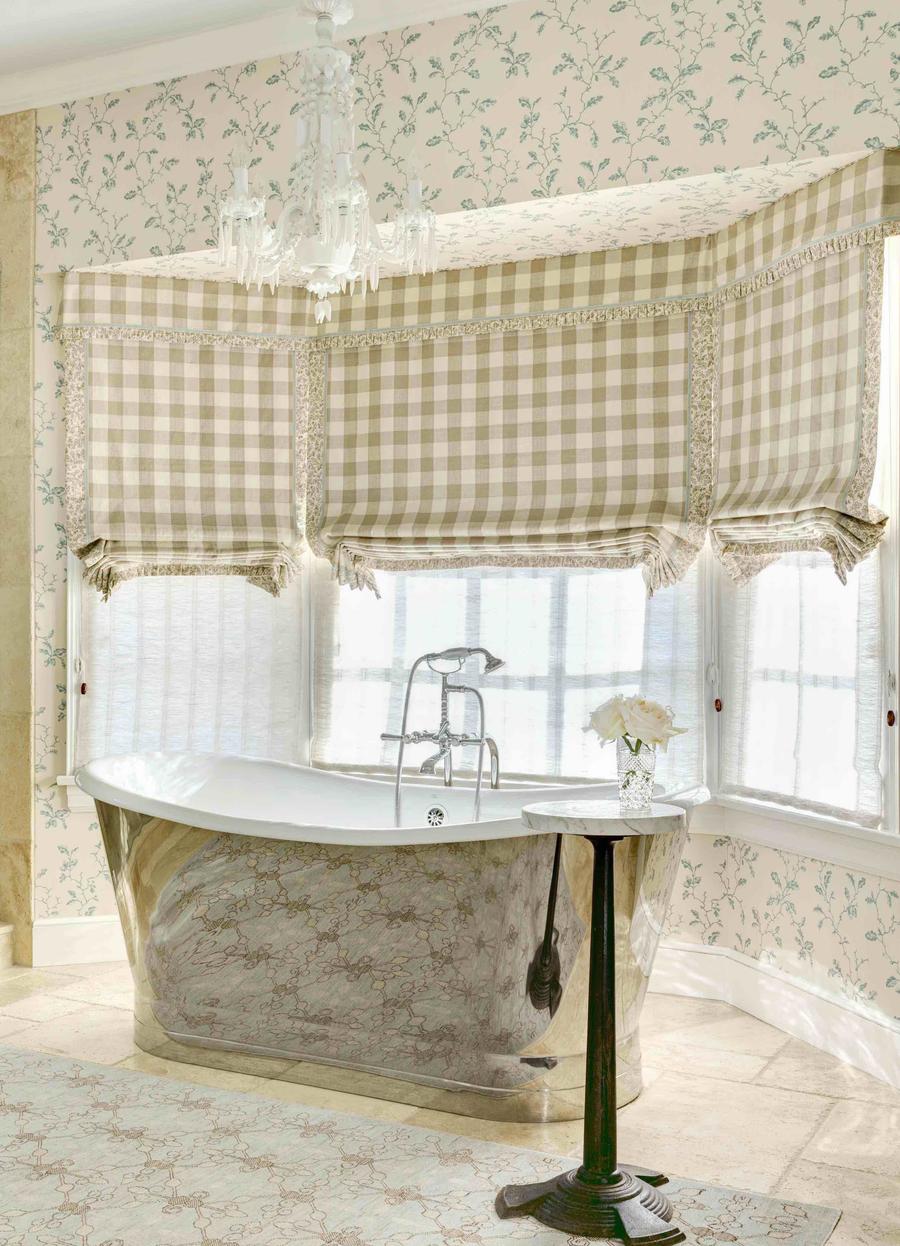
What do you mean by ‘failed a lot’?
One client had me designing airplanes and doing a megayacht for them. I think I was 24. It was still the time of a lot of opulence, where we did very over-the-top drapes—swags, jabots and trim. We were doing all six of the bedrooms below deck, with full window treatments—and, well, I didn’t really think through the length of the screws that we were using to hang these several-hundred-pound valances that were going up.
We spent about three days installing all the window treatments. At the end, I was like, “Wow! It’s like Marie Antoinette could live here.” And the clients loved it—they came and looked at it when we were done. But the next day, I got a phone call from my client. I was like, “Hey, are you loving the boat?” And she said, “Well, we did—but it sank. The screws that they put in were a half-inch too long and pierced holes in the boat all the way around.”
My first thought was, I’m going to lose everything, because there’s no way in the world I can pay for this yacht. Then she said, “We just wanted to thank you, because we had it insured for twice its value, so you just made us a fortune. But for the next boat, let’s remember about the screws.” And then she died laughing, so luckily she had a sense of humor about it. You know, you learn through your mistakes. But most clients aren’t that generous. I mean, I’ve screwed up a lot of things and they haven’t been nearly that kind.
Oh. My. God.
I’m [now] big on measuring multiple times—checking and double-checking. It made me very OCD in my decision-making process.
I believe that! Has your business changed a lot over time?
I think to be a good designer, you have to embrace change. I’m not one that’s big on a “look.” I don’t believe a designer should ever have “a look,” because that’s a death for you. There’s nothing worse than a client going in a room and saying, “Oh this looks just like so-and-so!” A client should come in and go, “This looks just like me.” It should be the best of what that person represents, as though a designer that was never there.
You recently netted two design awards.
We won an ASID award for commercial design and I was named Interior Designer of the Year by the Interior Design Society, both in 2019. I look at it as all of this hard work finally paying off.
Is this your first big industry acknowledgement, outside of being published?
I’ve always been published—I’ve been in every national magazine, and this year, we happened to be in four coffee table books—but I’ve never been one to be super involved in industry things. Everybody says that to be successful in this business, you have to have a PR person, but I grew up in the era where you did it yourself.
I’ve always been self-driven. But it’s harder and harder as the design world has become so focused on a PR person who controls who’s in every magazine. It’s the same people over and over. It’s exhausting. Your work should be judged on the talent, not because you pay $8,000 for a press agent.
Are you still doing all of that yourself, or do you have someone on your team who handles internal marketing?
I do now. We [hired someone] three years ago. All of my designer friends were like, “Why aren’t you submitting this? Why aren’t you getting things published more?” To be honest, I sign NDAs for the majority of my work, so some of my best, most beautiful work will never be seen. But I thought, if we don’t go the PR way, I’m going to do it the academic way. That’s why we started entering ASID and IDS [competitions]—things that are actually based on talent. And we were identified as one of the top 100 firms in the world in the Andrew Martin Interior Design Review in 2017 and 2019.
Has that acknowledgement changed anything about your business?
The more awards you win or the more published you are, the more people start to think that you’re too busy for them or that they can’t afford you—so all of that is a double-edged sword.
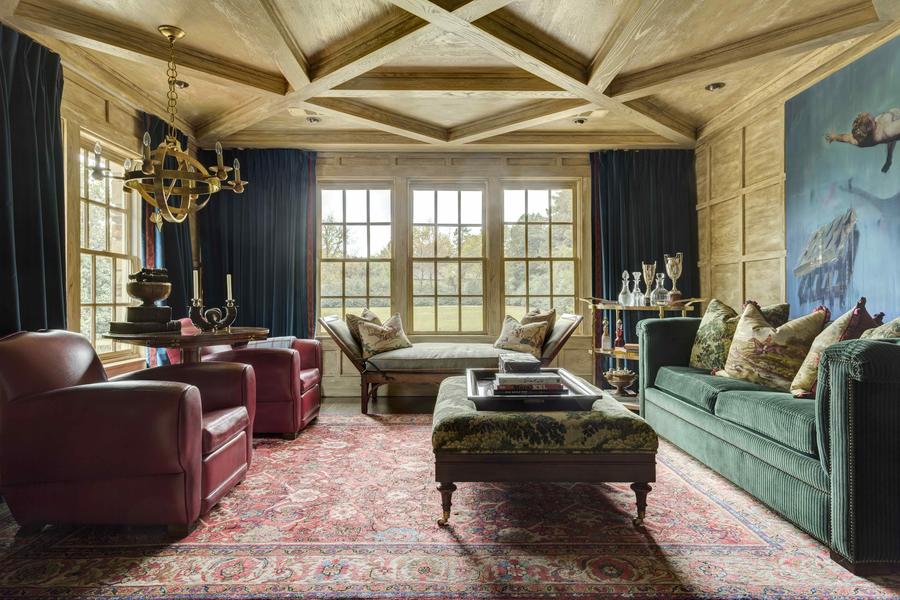
What about your own home? There’s no NDA on that.
I think the number-one mistake a designer can make is publishing their own home. The way I live is totally different than the way I design, but if somebody sees the way you live at home, they automatically think that’s your style. We do every single style, from ultra-modern homes to massive chateaus. And we don’t ever repeat a fabric or a piece of furniture twice. We’ll cut every sample we’ve used [in a project] out of the books so that we never use it again. I’ve done that since I first started, because so often there’s safety in numbers [when it comes to design choices]. They’ll always be like, “Well, so-and-so down the street used this fabric and I just loved it.” But I always say, “Why do you want what your friend has? That’s your friend, not you.” You really have to push your clients to think outside the box. It goes back to educating your client.
I can’t believe you actually cut the image or the sample out of the book!
When we start a project, every client gets a bin—a giant plastic tub with their name on it. A sample of textile and wallpaper, a photo or tearsheet of everything, we cut them out and keep them there.
How big is your office? That’s so many bins!
It’s big, and we also have a huge warehouse. I’m big on archives of work, because it’s fun to go back and see what you’ve done, how far you’ve come, how your taste evolves. I think when you start out, you think of design as Louis XV. You do that for a while, and then you realize that really good taste is actually more Louis Philippe, which is just the pared-down version of it. When somebody starts a project, they want gold. And more is more! Then you realize, No, I need to strip that down. I love to look back at the bins to see how clients’ taste evolves, too, because the more educated they become, the more they appreciate quality. It gets more and more refined.
Do you photograph all of the projects that you do, even if you can’t publish them?
If our clients will let us. I put in our contracts that we have to photograph everything, just for our own personal archives—and we do photograph the majority of them so I can look back. But most can never be published. It’s hard for people who run huge companies—they don’t want [employees] to see how they live.
Not even anonymously?
If you’re in a small area like we are, people are going to know [whose house it is]. You can’t keep a secret. That’s why we have [so many] NDAs. It’s very frustrating for me, because some of the most beautiful things I’ve ever done are hardly ever seen. But at the same time, those clients give me the most work, because then their friends hire me. You go between vanity and [wanting popularity and visibility] to [wanting to] make money. You walk that fine line of what’s more important, but it always [comes down to] making money. You know, you’ve got to make payroll.
How do you navigate Instagram without images of your work to share?
I’ll do a picture of a small section of something we’re working on, but not the whole room—tight shots of some little detail work, just so we can show what we’re doing.
At the beginning of your career, you said you had to learn about how to charge. Is that something you struggled with throughout your career, or did you develop a set way of approaching that?
The biggest problem with the design industry is that there is no set structure to billing. And this is something I’m working on with several different groups—trying to formalize or standardize pricing in the business. Clients know a lot more now, and if you’re not transparent, you’re going to get caught. I think you have to be open and honest about what things cost. It’s a hard conversation—nobody likes talking about money, ever. There’s always going to be somebody who can sell it cheaper, but you have to explain to your client that you charge what you do because you deal with the shipping and receiving, it’s your responsibility if something is damaged, and you’re also paying for my time to select it. If a client’s not willing to do that, you have to realize that it might be time to walk away.
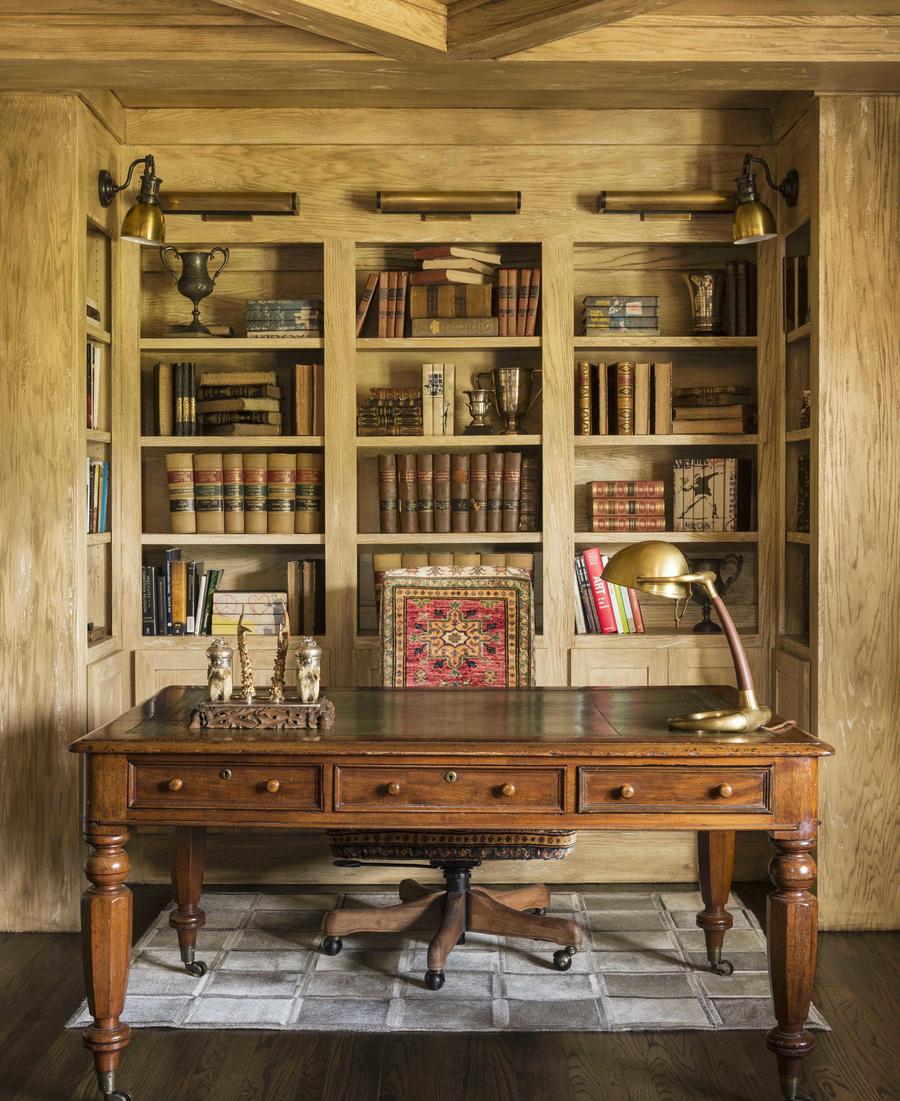
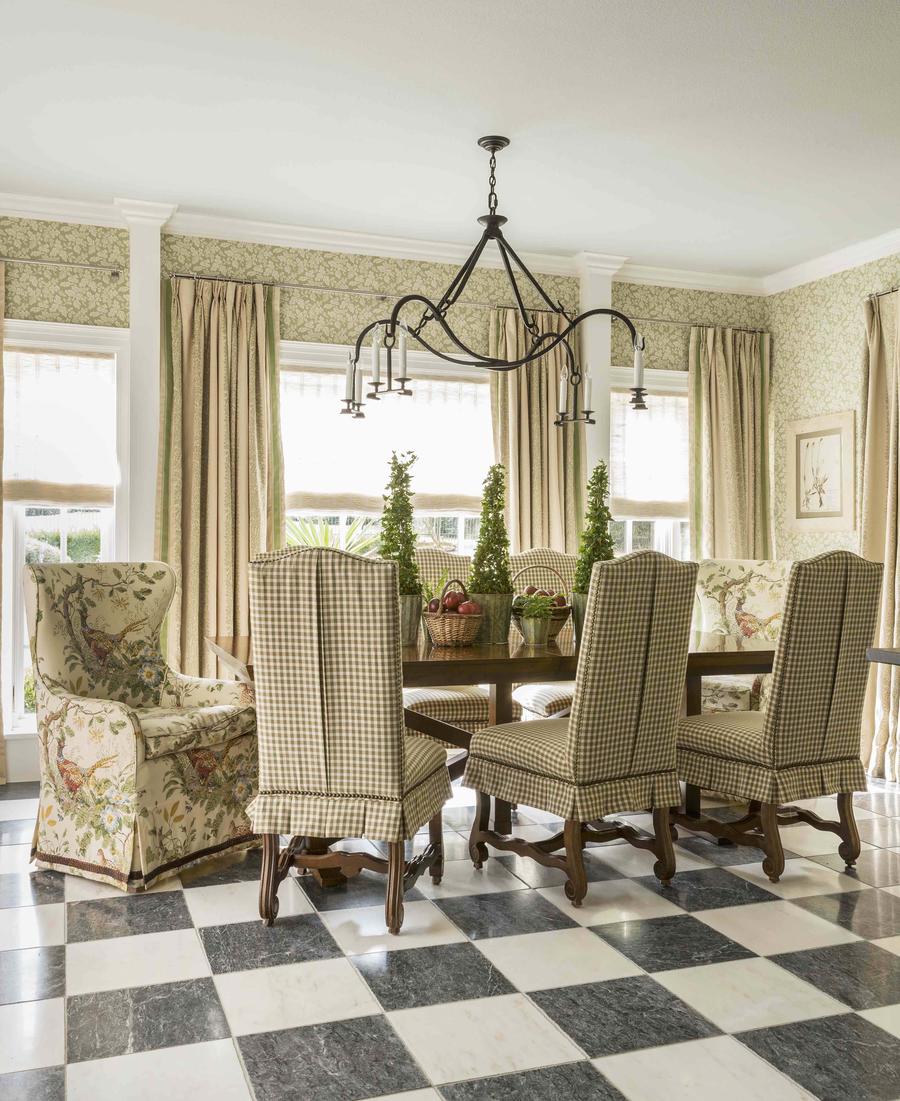
Why did you close your store?
I had my store for 15 years, but then the internet came along and there was really no need for me to have a store, because everything was available online. And the knockoff market became so big—I’m a purist on materials, everything has to be real, so I would want something to be carved out of wood, but you could find something similar out of resin. It became a chore trying to stay ahead of the market. It wasn’t fun anymore.
The internet has ruined shopping. The best part of shopping is the experience of going into the store and finding a treasure. I always tell clients when they’re traveling, if you see something you love, buy it and we’ll work it into your home. That energy is important—that it’s something you love, that you found. It’s not something where you were bored one night online and just bought something you found on 1stdibs.
How much are you shopping in person versus online?
I’m so old-school that I still have real catalogs in my office. It makes my team crazy, but I like the feel of the paper, I like to flip through it and cut fabric samples out of the books. My team will take that and turn it into digital storyboards and renderings, but everything is hands-on with me.
I’m also big on taking clients on buying trips and to market. I want to shop with my clients. It’s their house, not my house, and it’s a personal experience. It needs to be a reflection of the homeowner, not the designer. I can interview a client and know which market I’ll take them to, which showrooms, which city. I travel a lot with clients—I’ve brought clients to Paris on shopping trips, we’ve gone to Italy to buy marble slabs, we go to London a lot. When I first started, with my U-Haul, I would hit every antique and flea market with my clients, but the internet has changed that. Everything’s online.
What are your clients gravitating toward these days?
I always find that nobody wants what their parents want; they want what their grandparents had. This new generation is over all the grays; they’re wanting the florals and chintzes that they remember growing up with. I’m now working with third generations of families—I did the parents, their kids, and now I’m doing their kids’ kids—and it’s fun to see the circle. We’ve seen a lot of ’70s-inspired stuff and now we’re kind of hitting the 1980s, which I think is funny.
Do you think some of those 100-pound valances are going to come back?
I think people are wanting more embellishment; trim is big again. I think they realize that it felt cozy, or want a little more opulence because the outside world is sad, so you really want to make the inside beautiful. I love to take a really modern chair and cover it in a floral fabric—the younger buyer wants the nostalgia, but they still want modern, clean lines.
Your work is all over the world—but how much of it is still in Arkansas?
We have five projects out of the country right now, and I travel three weeks a month. I started working [out of state] because I would do my clients’ vacation homes, and then their friends would see it and ask who did the house. There’s no better way to move your business forward than through referral.
Is that what most of your growth has been?
It can make you or break you. If you’re selling a product, advertising does wonders. But if you’re selling a service, it’s all word of mouth. That’s how my business has grown from a little-bitty town in the middle of Arkansas to a global brand.
What are the challenges of working abroad?
I've had stuff held hostage in Mexico and the Cayman Islands when I worked on projects there. I’ve actually had to fly down there to the customs people and they’ll be like, “How much cash do you have on you?” They know your daily max, so they’ll be like, “If you bring us $400 a day in cash over the next four days we’ll release it.” It’s such a shady thing.
I guess it is worth it for a container’s worth of stuff?
It’s literally hundreds of thousands of dollars worth of furniture. The clients have no sense of humor about it sitting somewhere. So you just kind of learn. The first time they asked me, I thought I was being tricked. I was in Jamaica and they were asking me what my daily limit was on my credit card and I thought, That is a weird question. [Then I realized,] oh, they’re gonna want money. I thought, Is this bribery? Am I gonna end up in jail here forever?
That’s wild. Do you like life on the road?
I love it because I’m inspired by it. There’s nothing better than going somewhere new and meeting new people—like talking to you today. You learn. And you know, sitting here, I could people-watch for days. There’s also nothing better than room service! The travel also gives me time to recharge. I think all creative people have to have down time. In my office, we call it “going dark.” I only have so much creative energy in a day or a week or a month and then you have to recharge.
You’re spent.
Yeah, it’s not ever-flowing. You have to constantly be inspired. If you’re constantly giving, you don’t get back to yourself. And the older you get, the more you have to have some down time. So I’ll travel a lot and then go and recharge by myself in my hotel, or go out to a nice dinner, or go meet new people. When you’re young, you want to go, do, go, do, go, do. The young designers in my office don’t have an off switch, which is why I hired them! That’s how I was, but sometimes daddy needs to sit down!
How do you find talent? What do you look for when you hire people?
I like to give people a design magazine and tell them to mark what they like and don’t like with Post-its. That gives you a good sense of their taste level and if it meshes with yours—it’s not offensive, and there’s no right or wrong answer.
I used to think employees were forever. Now I’ve learned they’re [here for] three to five years, max. Right now, we have a really good, tight family, but I know nothing lasts forever, so the number-one rule is that you’ve always got to be looking for somebody to hire. And technology—bringing in talented people who are super savvy with construction documents, Revit models, things that we never had to do before. I used to say, “Oh, we’re going to do a sofa here, it’s gonna be pink, and then we’re gonna do some pillows in blue, and we’re going do a great rug, and two tables,” and clients would be like, “Sure!” Now they want to see a 3-D rendering. That’s part of the evolution of the design business.
To be able to provide that?
Finding people that can do that. So I do storyboards the old-fashioned way. We lay them out on a tray and create a whole room. Then my team will take that and turn it into a 3-D rendering or a model for clients to look at. You have to be willing to understand what your weaknesses are and what your strengths are. I look for the people that can fill in the things I can’t do.
I tell everyone on my team, You’ll have as many failures as you do successes. But I also say, “This is what I did wrong, so don’t do this.” If you’re going to mess up, do something I haven’t done! Surprise me. And after 30 years, it takes a lot to surprise me. But I’m still surprised occasionally.
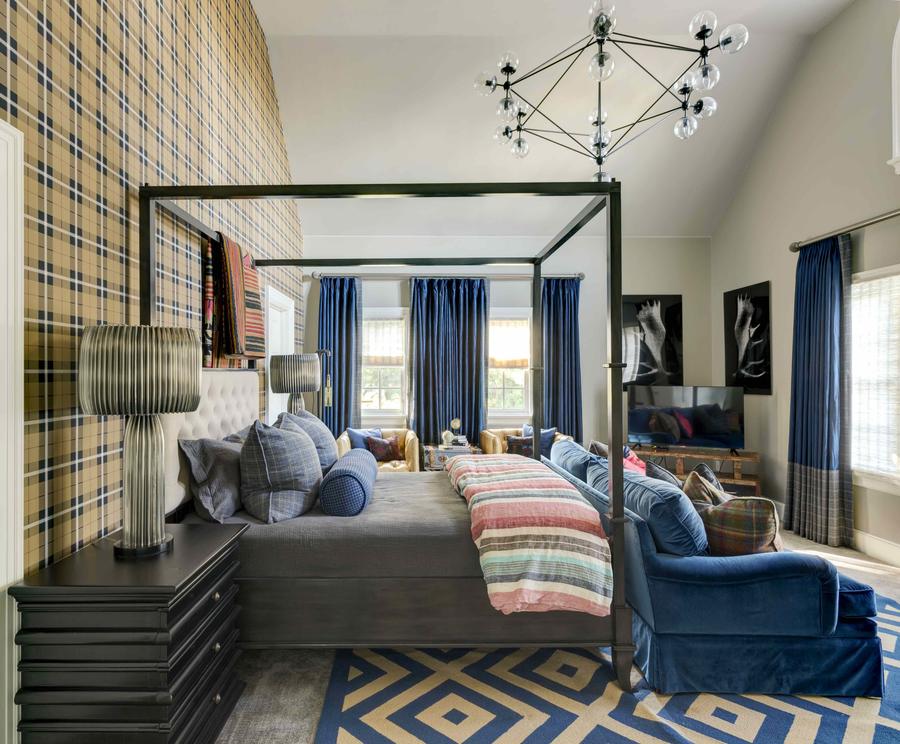
What’s your criteria for taking on new work these days?
My criteria for taking on new work is whether it excites me or not. I’m lucky that I’ve gotten to this place in my life where I can say no—and it took me a long time to learn the power of no. You’re always afraid that if you say no, there’s not going to be any more work. I've taken projects on because I felt like I had to, and they didn’t end up going as well. So I have to be really excited or passionate about it—it has to be fresh, interesting and a client that wants to take a chance on something different.
In the three decades you’ve had your firm, there have been several recessions. How do you ride those out?
I live in a bubble. The area we live in is pretty much recession-proof. We have 3 percent unemployment.
But I’ve had leaner times, for sure. It’s feast or famine—we’re either super swamped or it’s really quiet. And I’ve learned over the years, there are certain months when people are on vacation, on the holidays, their bills are due, and we schedule our work around them. You learn the ebb and flow of people’s lifestyles. You know that when Christmas decorations come down, people are going to want their house done, but it’s not going to happen until February, because they have to pay off the Christmas debt. The summer’s going to be a little slow, because people are doing family vacations and getting ready for back to school. Luckily, commercial work is consistent and we’ve had enough [of that] to fill in. We’re also in the process of developing our own fabric and furniture line.
Will that be with a brand?
We’re doing one with a brand and one independently. I want to try it both ways, to see if I can do it. But you may see me on the corner with sofa samples next time you’re here, and a sign that says, “Come sit on me!” We’ve been approached for years to do this, and it’s just taking the time. That’s my goal for this year, to get all the design work finished and get that into production. We’re also working on a bedding line with a major bedding company.
Are those relationships because they’re vendors that you have used so often?
They’re vendors we use a lot and they like my approach. It’s part of the evolution of a design career. I can’t be driving U-Hauls forever, so I’ve realized that I’m going to have to start branching into other areas.
To learn more about Chris Goddard, visit his website or find him on Instagram.
Homepage image: Chris Goddard | Mark Jackson/Chroma
















